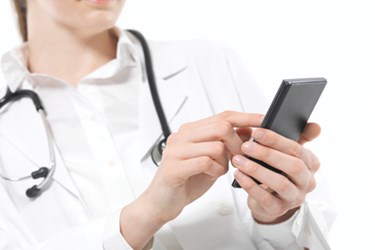40 Million Use Smartphones For Fitness And Wellness

By Katie Wike, contributing writer

A survey has found a large portion of Americans with smartphones are using them to track their health and fitness through apps.
According to a new survey released by Parks Associates, more than 40 million Americans with smartphones use them to track their wellness or fitness through an app. iHealth Beat reports the survey further found one in four heads of household that have broadband internet also track their fitness or caloric intake through an app.
“Digital health is an important part of the Internet of Everything, and wireless carriers need to align their connected health businesses with their larger connected living strategies,” said Jennifer Kent, Director, Research Quality & Innovation, Parks Associates. “Mobile carriers have multiple opportunities to provide value for business customers and consumers, though the landscape differs significantly by region.”
MobiHealth News explains the report recommends mobile operators in the US become more active in offering digital health services to businesses and consumers. According to the researchers, mobile carriers could make a profit by offering services in text message-based health, weight management, and prescription authentication.
“U.S. mobile carriers are focused on providing enterprise services, like cloud storage and teleconferencing solutions, to their healthcare provider clients,” Kent said. “However, carriers can play a valuable role in the consumer space. Given their established relationships with consumers, expertise in providing consumer-facing services, and connection to consumers’ mobile devices, carriers can bridge the divide between care providers and consumers, particularly in regards to health data collection and transfer as well as communications between providers and patients.”
The report also points out that connected health devices like smartphones accounted for 4 percent of all machine to machine connections in 2014, a number they expect this number to double by 2020.
